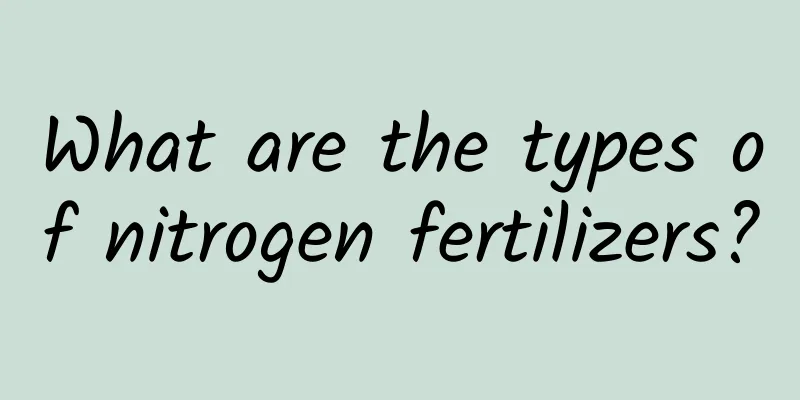When to apply top dressing after Chinese cabbage sprouts (When to apply top dressing after Chinese cabbage sprouts)

|
When it comes to cabbage, no one will feel unfamiliar with it. The demand for cabbage in the vegetable market is very high in the autumn and winter seasons every year, so there are also many farmers who grow cabbage. In particular, the cabbage grown outdoors in autumn in northern my country not only tastes good but also has high nutritional value, and is very popular among consumers. During the planting process, cabbage needs sufficient water and fertilizer to promote leaf growth, increase the weight of the head, make the cabbage firm and the leaves tender. Such cabbage has better commercial quality. In the actual planting process, farmers often encounter various problems, such as scattered leaves, low yields, and problems with fertilization. Dark green cabbage leaves How to manage cabbage to get high yield and qualityCabbage is a cold-resistant and fertilizer-tolerant vegetable crop. Cabbage grown outdoors after autumn has a much higher taste and nutritional value than cabbage grown in greenhouses. However, cabbage's root system is relatively weak, and its resistance to stress and pests and diseases is relatively poor, so it is more difficult to manage when grown outdoors. It is easy for diseases and yield reductions to occur due to light and temperature, so farmers need to do a good job of fertilization management during the cabbage growth period, which can significantly improve the cabbage's resistance, yield and quality. Cabbage in the growing season Tips for increasing yield, improving quality, preventing diseases and applying fertilizers in growing cabbageTip 1: Apply good base fertilizer Fertilization is the best way to promote crop growth during agricultural planting, and the top priority of crop fertilization management is the application of base fertilizer. The root system of cabbage grows relatively poorly, so the significance of applying base fertilizer is even more prominent. The soil should be plowed and prepared before planting cabbage. Before plowing the soil, it is necessary to apply organic fertilizer heavily, which can improve the soil's moisture retention and air permeability, and is of great significance to promoting the growth of cabbage roots . Then apply an appropriate amount of compound fertilizer before sowing cabbage. The fast-acting ingredients in compound fertilizers can promote seed germination or awakening of seedlings, and the long-lasting effect of compound fertilizers can provide sufficient nutrients for seedling growth. The soil is fertile and the moisture content is good, so the cabbage grows well Tip 2: Apply fertilizer frequentlyHowever, crops and humans have many similarities. Although cabbage is relatively cold-resistant, the degree of cold resistance is most directly related to the growth of cabbage. Therefore, during the growth period of cabbage, we cannot rely solely on base fertilizer to provide nutrients. Additional topdressing is also needed during the peak periods of fertilizer demand, such as the plant growth stage, rosette stage, and heading stage. Use Tianqing Mineral Source humic acid liquid compound fertilizer in combination with calcium, magnesium, boron and zinc, dilute it with water and then apply it by flushing or spraying to quickly replenish a variety of macro, medium and micro nutrients, enhance leaf photosynthesis and promote the synthesis of nutrients. Fertilization in this way can accelerate the growth of cabbage stems and leaves, and at the same time, calcium and boron supplementation can prevent and treat nutrient deficiency diseases such as dry heartburn and improve the stress resistance of cabbage. At the same time, it can also reduce soil-borne diseases and bacterial reproduction, resulting in high cabbage yield, good stem quality, few diseases, strong cold and drought resistance. Cabbage grows well, yields high, leaves are of high quality Tip 3: Comprehensive fertilizationThe needs of any crop cannot be met by applying only nitrogen, phosphorus and potassium. This is why nitrogen, phosphorus and potassium fertilizers are applied most of the time during agricultural cultivation. This is because crops have high demands for nitrogen, phosphorus and potassium , but low demands for trace elements such as calcium, magnesium, boron, zinc, copper, iron and manganese, which also play a decisive role in the growth of cabbage. However, with the large-scale application of chemical fertilizers and continuous planting, the trace elements in farmland soil have become very few. If trace elements are deficient during the growth period of crops, nutrient deficiency will occur, resulting in reduced yield and quality. Therefore, cabbage fertilization should be comprehensive and not limited to macroelements. |
>>: How to make Chinese cabbage mature quickly?
Recommend
Characteristics of Sakura
1. Appearance characteristics Cherry blossoms gro...
How long does it take to market geese?
Geese are omnivorous poultry that mainly eat gras...
How to deal with root rot in desert rose
1. Remove the pot and prune If the roots of the d...
Air plants - a fairy plant that anyone can keep alive
Air Plant Introduction Air plants are also known ...
What crops are suitable for growing in flooded land? What crops are suitable for growing in flooded land?
Waterlogged land refers to fields with low terrai...
How to prune bird of paradise
Bird of Paradise, also known as Strelitzia regina...
How to propagate Pilea coleus by cuttings
Cutting medium When it comes to cuttings, the cut...
What to do if Spathiphyllum doesn't bloom
1. Continue maintenance The Spathiphyllum has not...
Superstitions about orchids blooming
1. Superstition about orchid flowering Indicates ...
The flowers are bigger than the face, one of these flowers is worth a pot of others
Dahlia Flowering period: June-December (Author: Y...
Why Phalaenopsis doesn't bloom
1. The light is too weak One of the reasons is th...
How to Identify Brussels Sprouts
1. Appearance Brussels sprouts are biennial or pe...
When is the best time to sow osmanthus seeds?
Osmanthus seeds sowing time Osmanthus seeds can b...
How and when to plant peony flowers
Peony planting time The best time to divide peony...
Does geranium prefer shade or sun?
Does geranium prefer shade or sun? Geranium is ve...









